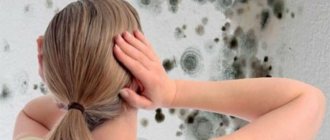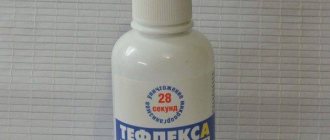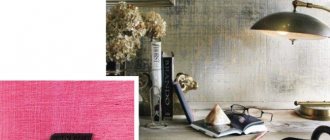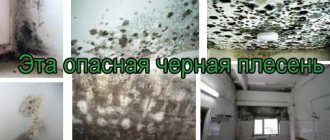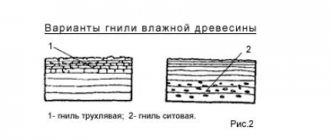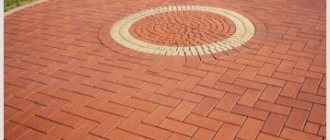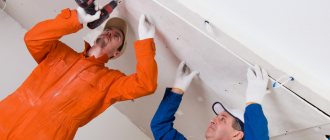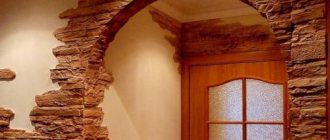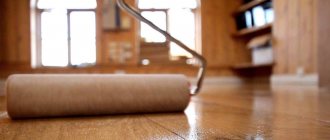Controlling parasites in the garden
Copper sulfate or copper sulfate is used by gardeners to kill some parasites. The prepared solution based on copper sulfate protects vegetable and fruit crops from various diseases.
This chemical is actively used to combat diseases and parasites of the following crops:
- Tomatov.
- Potatoes.
- Cereal crops.
Solutions prepared on the basis of blue granules protect plants from the following diseases:
- Exanthems.
- Mold.
- Dry peaks.
- Spotting.
- Black cancer.
- Chlorosis.
- Athracnose.
As a rule, plants are treated with this product in the spring to prevent these serious diseases. Plants are processed at a time when buds have not yet appeared on them, much less flowers. When the disease has already been identified, the plants are sprayed with this composition every 12 days until the disease disappears.
The drug is considered a highly effective treatment for the following stone fruit trees:
- Plums.
- Quinces.
- Apple trees.
- Pears.
In addition to stone fruit trees, tomatoes and potatoes, the product helps fight diseases of roses, currants, and gooseberries. To treat garden crops, gardeners use a 0.5% solution. The higher the copper content in the solution, the more effective its effect.
The use of copper sulfate in gardening should be based on the rules and some recommendations. For example:
- For more effective use of copper sulfate, you will need to apply it twice a year - in autumn and spring. Between these periods, copper sulfate may be used only in cases of obvious plant disease.
- The optimal time for processing garden crops is early morning or late evening, when there is no direct sunlight. In cases of processing at other times, you can harm not only yourself, but also the plants, which can get burned.
- To soften the effect of the composition on plant leaves, you can add lime to the composition; 100 grams of lime should be added per 100 grams of copper sulfate. This composition has its own name “Bordeaux mixture”. The invention of this liquid belongs to French winemakers who protected grape plants from pest invasion.
- It is not recommended to use the solution during the flowering period of garden crops, as this may negatively affect the fruits.
- It is not recommended to exceed the norm for treating plants, as this can lead to certain diseases that inhibit the growth of trees or shrubs.
- If you use copper sulfate, you can prevent plant disease from fusarium. When planting onions or garlic, it is advisable to treat the bed with this solution. To do this, dilute 1 tablespoon of granules in a bucket of water.
Preparation of the solution: detailed instructions
Let's look at how to prepare an aqueous composition of copper sulfate using the example of a 1% solution:
- We use non-metallic dishes with a capacity of 12-14 liters.
- Pour 100 g of copper sulfate powder into a bowl.
- Pour in 500 g of hot water, temperature about 50 0C.
- Mix the solution thoroughly with a wooden stick or spatula until dissolved.
- Add 9.5 liters of water at the same temperature. Mix again.
- We filter the solution.
In the future, we use the resulting solution for its intended purpose. To spray plants, we use a sprayer; to treat surfaces, you can limit yourself to a brush or sponge.
Prevent mold formation
The well-known rule: it is easier to prevent an event than to deal with its consequences, also applies in this case. The steps you need to take are simple, but after doing them you may forget what molds look like:
- Avoid over-humidifying the air in the room.
- Monitor the performance of the communal hood, periodically checking the draft by placing a piece of paper on the ventilation grille. Invite specialists if repairs are necessary.
- The air movement in the apartment can be limited by tightly closed doors; it is advisable that there is a gap at the bottom of the door.
- Ventilate the room through windows. It would be good if they have built-in supply-type valves - when the humidity is high, they automatically turn on, and when the norm is reached, they turn off.
Having made sure that all sources of high humidity have been localized and measures have been taken to ensure normal air composition, you can proceed to the next stage of work
It is important that the manipulations to maintain humidity at the proper level are constant
Destruction of wall fungus with vitriol
The product is sold in most stores specializing in construction and household equipment, selling seeds and agricultural equipment. You can also find sorted vitriol in pharmacies and veterinary stores.
Application against fungus will require preparing a 3% solution. Mix 30 grams of active substance per liter of warm water, then mix thoroughly. After which you can add 1 tbsp. vinegar.
Moldy room
The product has an affordable price. To prepare a liter of solution you will have to spend from 25 to 40 rubles. Moreover, you can buy a large package.
How to properly treat walls
Before starting work, preliminary preparation is required. It includes four stages:
- Completely clean areas of high accumulation of microorganisms from all finishing materials.
- Then you need to remove the plaster. Mold usually penetrates deeply into porous material with mycelium.
- Then, you need to clean the surface with coarse sandpaper.
- Wash the walls with a soap solution and dry.
The need for such complex preparation is required to completely remove all layers that contain mold parts.
After which you need to use a working solution. There are a number of rules that must be followed to achieve greater efficiency:
- It is best to apply the product with foam rubber, a brush or a spray bottle.
- Take your time when applying the product. The active substance must penetrate deep into the wall to act on the parts of the fungus hidden behind the surface.
- To consolidate the result after applying the vitriol layer for the first time, it is advisable to repeat it when the walls are dry.
To speed up the drying process of the walls, use a fan or hair dryer. It is worth studying the degree of fungal infection. If the mold has established itself deep in the material, the application will need to be repeated several times.
What else can you mix with?
Cleaning the wall with copper sulfate is carried out to remove and prevent bacterial plaque. However, there are other means that can effectively cope with colonies of microorganisms. For example, sulfur, fluoride pastes and slaked lime. However, contact with the substances causes harm to the body of people and pets.
Some compositions can be used exclusively for treating walls in non-residential premises. These include oil-containing compounds, for example, tar, bitumen or olive oil. However, the protection can hardly be called reliable. The least harmful to health is caused by a mixture of slaked lime and copper sulfate.
You will need:
- 1 kilogram of lime;
- 10 liters of water;
- 100 grams of vitriol.
How to dilute vitriol for wall treatment:
- Initially, dissolve the vitriol in warm water, stir until the color is uniform.
- In another container, mix lime with liquid.
- Then combine the two solutions and mix.
After which you can apply the solution to the walls with a brush or foam sponge and wait until it dries completely. Rubber gloves are required to protect your skin.
Necessary Precautions
To treat a wall against mold using copper sulfate, you need to prepare protective measures. And although, according to the classification, vitriol belongs to low-hazardous compounds, the effect is observed not only on micro, but also on macroorganisms. This means that the owner of the apartment, household members and pets may also suffer. Therefore, when processing it is worth following some recommendations:
Recommended protection
It is important to protect the mucous membranes of the nose, mouth and respiratory tract from contact with the solution. When working, be sure to use a respirator. The skin is protected by using rubber gloves and thick clothing
Without the use of which irritation and allergic reactions are possible. After cleaning the room, it is necessary to organize improved ventilation before drying. To protect your eyes, it is important to use goggles or a mask.
When the procedure is completed, it is better to minimize the time spent in the room. Cleaning the walls of mold and mildew in an apartment using vitriol leads to the evaporation of salts from the surface of the walls. Significant harm to health may occur. After 72 hours the substance causes virtually no damage.
You may also experience a gag reflex, severe migraines, involuntary contractions and breathing problems. These are signs of poisoning. Due to hypercuprosis, fever occurs, which is characterized by symptoms:
- the appearance of a sweet taste in the mouth;
- cough;
- temperature;
- migraine;
- excessive sweating;
- discomfort in the eyes;
- increased lacrimation.
What is needed to remove mold using vitriol?
To prepare and apply the solution, we will need:
- Copper sulfate - 100 grams.
- Warm water - 10 liters. The container is ceramic or metal with an enameled surface.
- Vinegar - 200 ml (not necessary, but will enhance the effect).
If you need to treat a large area, then the water-vitriol ratio should remain approximately the same - 100 to 1. That is, for 20 liters of water you need 200 grams of vitriol, for 50 liters of water - 500 grams.
Copper sulfate packaging
Additionally you will need:
- Sponge, or brush, or spray bottle - for application.
- Spatula, metal brush (for cleaning the surface).
- Antiseptic soap.
- Sandpaper.
Means of protection:
- Latex gloves.
- Respirator.
- Glasses.
- Clothing must cover the entire body.
How to dilute vitriol against mold?
Now let's talk about how to dilute the solution.
For convenience, you can dilute the product in 4-5 liters of water, and after dissolving it, add liquid to the full volume.
To enhance the effect, you can dilute the following in the solution:
- Vinegar (9%): 25-40 ml per 10 liters of water and 100 grams of vitriol.
- A few drops of tea tree oil.
- Any product containing chlorine.
Aqueous solution of copper sulfate
The prepared vitriol solution can be stored for up to 3 months (at room temperature), or up to 1 year if stored in a cool place. For storage, use tightly sealed ceramic or glass containers. You cannot store the solution in a metal container.
Surface preparation and work
Before using vitriol, you need to prepare the surface:
- If possible, ventilation of the room is ensured (windows are opened, hoods are turned on).
- On walls affected by mold, the decorative coating is removed. Removal of the coating is carried out depending on its type (wallpaper is torn off, plaster or paint is scraped off with a spatula).
- If spores penetrate deeply, the surface must be cleaned with sandpaper.
- Before using vitriol, it is recommended to wash the areas affected by the fungus with a soapy solution and then let them dry. This is especially useful if black mold has grown on the wall.
- Wear protective equipment.
- Prepare a solution of vitriol (how to dilute it is described in the paragraph above).
- Using a sponge (or brush, or spray bottle), apply the solution to the wall.
- Allow the surface to dry. Depending on the level of humidity in the room and the area of the treated area, this can take from 2-3 to 10-12 hours (on average - 4-5).
- If there was a lot of rot, or mold was on the wall for a long time, it is recommended to repeat the treatment 3-5 times.
- After the surface has completely dried, you can begin finishing.
Please note: it is possible to remove mold with this solution. However, if the cause of the rot is not eliminated, it is possible that after some time it will appear again, and repeated removal will be required.
Is vitriol dangerous, and what are the symptoms of poisoning?
First, about the dangers of copper sulfate (both in the form of granules and in the form of a ready-made aqueous solution):
- In case of contact with skin, there is no danger, but hygienic treatment is required (wash the solution with soap and water).
- Contact of the solution with the eyes may cause a burn. In this case, you should immediately rinse your eyes with plenty of water.
- Dosage that can lead to poisoning: 0.5 grams of powder in dry form and 11 mg/kg when inhaled.
- The lethal dosage is 45-125 grams (if swallowed dry). The exact figure depends on body weight, health status and age.
Stages of work
Symptoms of poisoning:
- nausea and vomiting;
- pain in the stomach;
- increased heart rate;
- general deterioration of health, weakness;
- allergic reaction;
- skin rashes, itching.
If these symptoms are felt when working with vitriol, you must:
- stop working immediately;
- if the work was carried out indoors and symptoms appeared due to inhalation of the substance, leave the room and ventilate it;
- seek medical help.
Copper sulfate poisoning is a rare occurrence. It is possible with:
- accidental or intentional ingestion (dry product or solution);
- prolonged stay without a respirator in an unventilated area in which the solution is used.
Precautions when working with copper sulfate
When using copper sulfate to treat walls against mold, you must take precautions, since this product is classified as moderately toxic.
While working with the drug, do not drink, smoke, or eat. Only one person should be in the room during processing. Avoid contact of the working solution with mucous membranes and skin, and if this happens, rinse immediately with water.
Symptoms of copper sulfate poisoning and first aid
Failure to follow safety rules when working with copper sulfate can negatively affect human health. If the antiseptic enters the body through the respiratory tract and skin, difficulty breathing, headache, general weakness appear, the nasal mucosa becomes inflamed, body temperature rises, and the heartbeat quickens.
If the working solution enters the digestive tract, then other symptoms of poisoning appear. Among them:
- sharp pain in the abdomen;
- nausea;
- vomit;
- loose stool.
In case of poisoning, you must call an ambulance. If intoxicated, you must immediately leave the room and go into fresh air. Then you should drink as much liquid as possible, induce vomiting, and then take activated charcoal at the rate of 1 tablet per 10 kg of body weight. For stomach pain, apply a warm heating pad to your stomach.
How does copper sulfate work against nail fungus?
To treat fungal-damaged fingernails or toenails, take warm baths with diluted copper sulfate. During a session lasting 15-20 minutes, a slight tingling sensation is observed. This means that the composition acts by penetrating the skin. After drying, a medicinal cream or a special ointment prescribed by a doctor is applied to the damaged areas. It is recommended to use comprehensive methods and take preventive measures to prevent the development of the disease.
Features of treatment
The use of copper sulfate against nail fungus is effective if you follow the recommendations for preparing and applying the drug
When purchasing, it is important to study the instructions and check the expiration date of the substance. You only need to prepare the composition for the baths on the day of use.
The prepared solution cannot be stored.
- Mixing copper sulfate with other components is prohibited.
- You cannot store an open package for a long time, otherwise the powder will lose all its beneficial properties.
- Before carrying out the procedure, you must consult a doctor and obtain permission for home treatment.
- Care must be taken to ensure that the solution does not come into contact with the skin or eyes during application. The affected areas are immediately washed with plenty of cold water.
- The water for the bath must be heated to 25 degrees; it is forbidden to drink or eat during the procedure.
- It is prohibited to apply the solution in food containers; metal containers cannot be used either.
- Treatment should be supplemented with wellness procedures.
For therapeutic sessions, you need to purchase copper sulfate and special containers made of silicone or plastic from the pharmacy. Prepare a solution for baths immediately before use; the entire procedure takes 25-30 minutes. Rules:
- The water should be warm. Add 1 teaspoon of powder per liter.
- The concentrate is thoroughly mixed.
- Keep your hands or feet in the pelvis for no more than half an hour, then dry the nails and rub in antifungal ointment or medicinal cream.
What is vitriol and how does it happen?
In addition to copper sulfate, there are other types of vitriol. However, copper sulfate is used to eliminate fungal spores. It represents crystalline hydrates of sulfates. Actively involved in medicine, agriculture, and construction. Externally, vitriol resembles small crystals with a blue tint.
Copper sulfate is used to eliminate fungal spores.
Copper sulfate treatment
Copper sulfate is an inexpensive but quite effective way to combat fungus. You can buy it at construction or garden supply stores. Copper sulfate is produced in the form of powder or blue granules.
Preparation and application of the solution
To make the solution, you need to dilute from 100 to 300 grams of vitriol in a 10-liter metal container with warm water. After adding vitriol, mix the solution thoroughly. To make the solution more effective, dilute a tablespoon of white vinegar in it.
Apply the vinegar-vitriol solution to the prepared surface. To apply, use a sponge or spray bottle. After 5 hours, when the solution has thoroughly dried, we carry out another surface treatment with copper sulfate. The total number of repetitions of the procedure depends on the degree of mold damage to the surfaces. Usually 2-5 repetitions are enough.
Note! If the material is affected too deeply, a simple treatment with copper sulfate may not be enough. You will have to completely remove the plaster or other material and then begin surface treatment
Security measures
Copper sulfate (copper sulfate) is a source of danger not only for the fungus, but also for human health. Although in reality it is quite difficult to get poisoned with copper sulfate - it will take more time than it takes to treat the walls, you still need to protect yourself from the negative effects of the solution. This can be done by taking a number of simple safety measures:
- Use rubber protective gloves.
- Protective clothing must completely cover the body.
- A gas mask or respirator should be used to protect the respiratory tract.
- The room where the surface is treated with copper sulfate must be well ventilated or ventilated.
Copper sulfate is hazardous to health for about two days - until it dries completely. Once dried, copper sulfate does not pose a threat to humans.
Signs of vitriol poisoning
Typical symptoms of copper sulfate poisoning:
- nausea turning into vomiting;
- pain in the stomach;
- cardiopalmus;
- general weakness;
- toxic shock;
- allergic manifestations, rashes, itching.
If you notice symptoms of copper sulfate poisoning, you should immediately seek help from a doctor.
If everything is done correctly, the walls are protected from the appearance of fungus even if there are conditions for its recurrence. However, reliable, long-term results in the fight against mold can only be achieved if the conditions for the development of fungus in the future are eliminated or at least minimized.
How much does it cost and where can I buy copper sulfate?
Copper sulfate is not a scarce commodity. It can be purchased at any hardware store, as well as at specialized retail outlets for gardeners and gardeners.
The packaging design of copper sulfate may vary
Copper sulfate is an inexpensive antiseptic. When purchased in bags (25 kg), the price ranges from 139 to 193 rubles/kg. The cost of a small package at different retail outlets may vary:
- 50 g - from 25 to 32 rubles;
- 100 g - from 33 to 65 rubles;
- 200 g - from 75 to 106 rubles;
- 500 g - about 240 rub.
Precautionary measures
In order for mold to leave your home forever, it is necessary to destroy the environment favorable to it. The rules are quite simple, by adhering to them, you can finally and irrevocably get rid of the problem:
It is important to regularly ventilate the room. Air movement will prevent mold from surviving.
The ideal option is to air three times a day for at least half an hour. Control the humidity in the apartment. Buy a special device called a hygrometer - a device for measuring air humidity. The optimal humidity in residential areas is 40–60%. If the readings are higher, warm up the room. Turn on the heater. Candles will also work, but you will need quite a lot of them, and such drying will also take more time. Try not to dry washed clothes indoors; when cooking, cover pots and pans with lids to prevent steam from spreading throughout the rooms. Avoid keeping flowers that need to be watered frequently. Also, if humidity is high, you should not install aquariums, decorative waterfalls, etc. at home. It is necessary to keep water pipes and plumbing in good condition. During repair work, use moisture-resistant materials and antiseptic substances. When installing furniture against walls, do not place it end-to-end; leave a small gap so that air can circulate between the wall and the back of the furniture. This is especially important for external walls that face the street. When installing plastic windows, be aware that plastic is a “non-breathable” material. You should think about the ventilation system.
Copper sulfate is toxic and should be handled very carefully:
Prepare the antifungal mixture immediately before use and use within 10 hours. Prepare the mixture and store it not in a metal container.
Copper corrodes iron and other metals. Toxic fumes of copper sulfate cause poisoning and vomiting, use with caution. Follow safety precautions, wear a respirator or mask on your face
Do not allow the powder to become dusty during work; after finishing the treatment, you must wash your face. The powder itself is harmless to dry skin, but it must be washed off. Wear rubber gloves and closed clothing. While treating the room with an antibacterial composition, turn on the hood or open the window. If you are poisoned by copper salt vapors, consult a doctor immediately.
After treating the room with a solution of sulfuric acid salt, do not allow conditions for the reappearance of the fungus. Monitor humidity, air exchange and temperature in the room. Leave gaps between the wall and furniture for air circulation.
Monitor the condition of water pipes and plumbing fixtures. Ventilate the apartment regularly. After high-quality treatment of the walls with an antifungal composition and compliance with the above conditions, the re-formation of mold fungi is excluded.
Surface preparation and processing
Starting the fight against mold involves cleaning the affected areas from the coating - wallpaper, whitewash or paint. After this, areas of the plaster in which fungal mold has penetrated deeper will become visible.
These areas must be carefully removed from the wall surface using a spatula or other convenient tool. Completely affected plaster is easily removed - it has lost its original characteristics and has become loose, sometimes even crumbly.
The cleaned surfaces are subjected to an additional cleaning procedure using sandpaper. The purpose of this procedure for us is to remove warped molds in which mold spores invisible to the eye may persist.
All waste - wallpaper and removed plaster - must be collected and thrown away. None of this garbage can be reused, since in all of these mold spores can remain intact and unharmed, which, if suitable conditions arise, will again begin their rapid brutal reproduction.
Then copper sulfate against mold is applied to the cleaned surfaces of the walls.
This is done by spraying or with an ordinary sponge. After applying copper sulfate, the walls are left to dry, which may take about 5 hours. After drying, the function is repeated and the walls are again left to dry. The number of repeated applications of copper sulfate solution directly depends on how badly the walls are damaged by the fungus. But in any case, the function is repeated no more than 5 times. And a mandatory condition is that before each new application, the walls must have time to dry thoroughly after the previous layer.
Where does rot come from?
Dry mold spores are simply airborne with dust and can be carried on shoes. The spores are extremely small and cannot be seen with the naked eye. When a spore finds itself in a favorable environment, it begins its development. At first, barely noticeable spots appear, but soon the colony of mold covers a rather vast area. If, of course, we allow her to do this, and not start fighting right away upon discovering these tiny settlements.
We recommend that you read
First of all, it is necessary to deprive mold of a convenient habitat if possible.
The development of mold is promoted by the local climate of premises in which:
- warm;
- high humidity;
- poor ventilation.
If you ignore the occurrence of the most common type of fungus - dark mold, this can result in a lot of problems for the health of family members.
At the same time, allergic reactions are the safest of those diseases that can appear.
Long-term coexistence with mold can lead to:
- dermatitis, eczema;
- conjunctivitis, stomatitis;
- bronchitis, tracheitis, laryngitis, pneumonia, asthma;
- nose and internal bleeding;
- diseases of the musculoskeletal system;
- damage to the liver and kidneys.
Symptoms of the effect of mold on the human body - causeless nausea and vomiting, headaches, an invariable feeling of lethargy - may remain unrecognized for a long time, and their cause may be incorrectly considered to be something else, some other irritant.
Mold not only poisons the human body, it can cause severe harm to furniture, clothing, and various other things.
Fungal infection spreads along the walls, floors, and ceilings of the house. In this case, virtually anything is susceptible to destruction, be it brick or concrete, wood or stone.
Having discovered the presence of this silent destroyer, it is important to give him a worthy rebuff as quickly as possible.
Surface preparation and processing
Starting the fight against mold involves cleaning the affected areas from the coating - wallpaper, whitewash or paint. After this, areas of the plaster in which fungal mold has penetrated deeper will become visible. These areas must be carefully removed from the wall surface using a spatula or other convenient tool.
Completely affected plaster can be easily removed - it has lost its original characteristics and has become loose, sometimes even crumbly.
The cleaned surfaces are subjected to an additional cleaning procedure using sandpaper. The purpose of this procedure for us is to remove warped molds in which mold spores invisible to the eye may persist.
All waste - wallpaper and removed plaster - must be collected and thrown away. None of this garbage can be reused, since in all of these mold spores can remain intact and unharmed, which, if suitable conditions arise, will again begin their rapid brutal reproduction.
Then copper sulfate against mold is applied to the cleaned surfaces of the walls.
This is done by spraying or with an ordinary sponge.
After applying copper sulfate, the walls are left to dry, which may take about 5 hours. After drying, the function is repeated and the walls are again left to dry.
The number of repeated applications of copper sulfate solution directly depends on how badly the walls are damaged by the fungus. But in any case, the function is repeated no more than 5 times. And a mandatory condition is that before each new application, the walls must have time to dry thoroughly after the previous layer.
After applying the outermost layer, the walls are left to dry completely. This process can last about 2 days. When the walls are one hundred percent dry, they plaster them where necessary, let the plaster dry, and then start gluing the wallpaper.
Properties of copper sulfate
Copper sulfate is a blue or white powder
Copper sulfate for mold on walls - how to dilute it and use it, how can it help? The second name of the substance is copper sulfate or copper salt of sulfuric acid. It is an inorganic compound, an odorless white or blue powder that is highly soluble in water. Anhydrous copper sulfate absorbs water well and can be used to dry gases and as a moisture indicator.
Copper sulfate has the following properties:
- Antiseptic;
- Disinfectant;
- Cauterizing;
- Knitting;
- Fungicidal (resists fungi, mold, bacteria).
Important! In addition, the substance helps plants in the synthesis of phytohormones and is not addictive to insect pests, which allows them to be poisoned without changing the poison. Copper sulfate is used in various fields:
Copper sulfate is used in various fields:
- To eliminate the effects of leaks and rust stains in construction;
- To prevent wood rotting and to treat walls against mold;
- To purify water in swimming pools and reservoirs, to prevent it from blooming;
- For disinfection of land, as a fertilizer in case of copper deficiency, to prevent the appearance of pests or fungal diseases on trees;
- To combat insects and late blight in plants, especially potatoes and tomatoes;
- To detect zinc, magnesium and manganese in aluminum alloys and stainless metals: if the alloy contains these metals, red spots will appear;
- Copper sulfate is a food additive E519, responsible for preservation and color fixation.
Copper sulfate is also used in the production of paints for fabric, leather and textiles, for the production of glass and mirrors, for the production of electric batteries and in pharmacology.
How does the drug act on mold?
Mold is a colony of single-celled fungi. They develop from spores that are constantly present in the air, but in a dormant state. When favorable conditions (heat and humidity) appear, the fungus begins to actively multiply - this is how mold appears.
Thanks to its antiseptic properties, copper sulfate solution copes well with mold that has settled on the walls or floor. The substance also dries the treated area, which helps fight the reappearance of fungus.
What does the substance look like?
Copper sulfate, copper sulfur salt, copper sulfate are all names for the CuSO4 compound with a characteristic bluish color. Among other types of vitriol, this substance is widely used in the agro-industry, agriculture, construction, medicine, and everyday life.
It looks like a blue crystalline powder, colorless and odorless, easily distinguishable from other bulk compounds.
What does the term “fungus” mean and its habitat?
Molds are such ordinary and at the same time complex creatures that can take root in virtually all conditions, reproduce well, and as a result of their life activity, spores arise that have a destructive effect on all organic matter.
Please note: the ideal environment for fungal development is:
- environment with air temperature from 21 to 30°C;
- poor ventilation;
- dirt and high humidity.
Mold fungi multiply extremely well where there are damp and thin walls that freeze in winter, where water constantly flows.
In an ordinary apartment, the fungus can be seen in the form of a dark green or dark coating, which appears not only on the walls, but also on furniture, carpeting and even on indoor plants and has a not very pleasant smell.
The fungus is most active in spring and autumn.
There is a worldview that mold occurs in old houses, so-called apartments - “Khrushchev”, where the panel walls are extremely thin and perfectly absorb moisture.
Please note: the fungus has adapted to its own life activity in modern homes.
The prerequisite for this widespread problem was innovative construction technologies - plastic windows.
It would seem that there is beautiful sound insulation and significant heat savings, but one bad drawback negates these advantages - poor ventilation. Air does not pass through such windows well and contributes to the appearance of fungus. He finds refuge for himself in hidden corners and begins his life.
Causes of fungus
There are three main fungi that become a source of mold:
- moldy;
- blue;
- rotting.
Blue stain and rot fungi primarily affect wood. Mold is a universal fungus and grows on almost all types of surfaces.
The main causes of mold:
- high level of humidity (75-95%);
- impaired air circulation (lack of ventilation, plastic windows, closed doors in a damp room);
- elevated air temperature (20 degrees above zero or more);
- missing or poor-quality waterproofing of walls;
- dampness in the basement;
- uninsulated seams on the walls;
- leaks in plumbing.
As soon as conditions are created for the development of the fungus, its spores land on damp surfaces and begin to spread in colonies throughout the building material, spoiling its appearance and leading to its destruction. Some of the spores enter the respiratory tract of residents, which leads to the development of many diseases, such as, for example, bronchial asthma.
